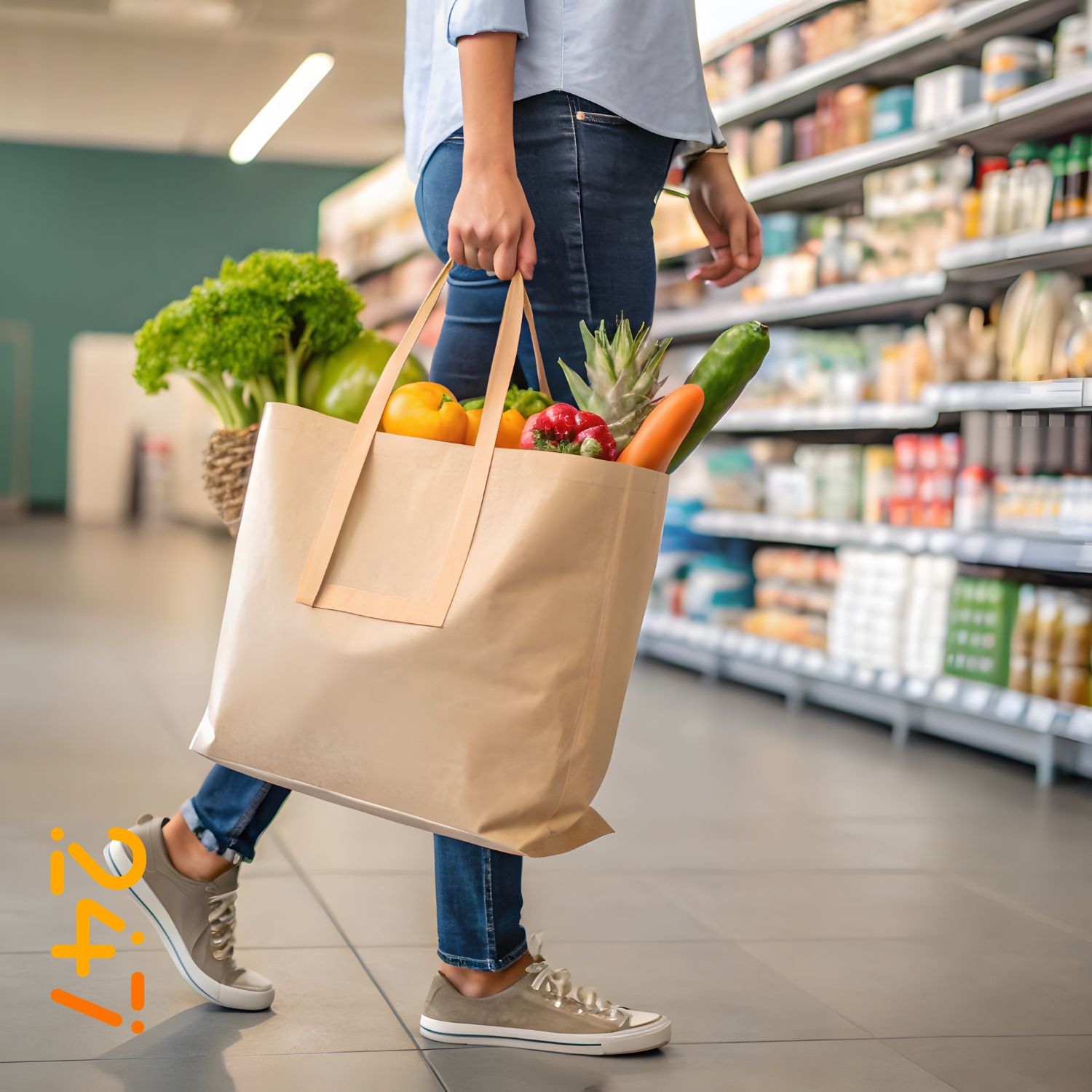
Kerri Godfrey
October 20, 2025
Automation isn’t just speeding things up, it’s quietly transforming stores into smart, self-running ecosystems built for the future.
AI and automation are reshaping how we shop. Dive into the 2025 grocery trends changing store aisles, screens, and everything in between.
.png)
Introduction:
What do over 9,300 social media conversations on platforms like X, Instagram, and TikTok analysed by listening247 tell us about the grocery retail industry in 2025? It’s in the midst of transformation. Technology, sustainability, and evolving consumer habits are reshaping how we shop for groceries. This blog dives into the latest trends and how retailers are using AI and automation to meet the rising demand for convenience, personalisation, and seamless shopping.
Inside the Future Of Grocery Retail: Top 5 Trends and Topics for 2025 by listening247 Gen AI:
1. Online Grocery Shopping & Delivery Services:
Did you know? Online grocery shopping has jumped 56% since 2022, with 22% of consumers now using delivery or pickup services.
In 2025, convenience is king. Shoppers want quick, affordable, and easy ways to buy groceries online or offline. To keep up, grocery stores are turning to tech like AI and unified checkout systems to manage inventory and prevent stockouts, while delivery services via mobile apps allow for speed and convenience. This, in turn, gives grocery brands more data to personalise the online shopping experience.
Sources: (Drive Research)
2. Sustainability & Eco-friendly Practices:
More shoppers are thinking green. From reducing food waste to offering local and eco-friendly products, sustainability is a priority. Smart checkout systems help by adjusting prices to avoid waste and highlighting eco-products. In South Africa, 64% of consumers are willing to pay more for sustainable goods. This means retailers who make green options affordable and visible have a big opportunity to lead and win loyal customers who care about the planet.
Sources: (Extenda Retail); (KLA)
3. Automation and Smart Technologies:
Many stores are turning to automation to lower costs and increase efficiency within their stores. Self-checkouts, mobile payment options, AI inventory tracking, and even cashierless stores make shopping faster and easier. Behind the scenes, these technologies also help reduce errors. Think smart shelves that track stock and AI to predict busy times so stores can staff smarter, or even autonomous stores that run almost by themselves. Automation is not just about convenience, it’s about efficiency.
Sources: (Extenda Retail); (Scale Computing)
4. Personalisation Through Data & AI:
Today’s shoppers are seeing shopping experiences tailored just for them. Using AI and data, grocery stores can create personalized deals, targeted ads, and in-store experiences that feel unique to each customer. Stores are using data collected to better identify their ideal customer profile and tailor stocked items or promotions for that group, turning data into meaningful connections. Personalization is no longer a bonus but expected by consumers.
Sources: (IGA); (Supermarket News)
5. An Omnichannel Experience:
.Shoppers want to move seamlessly between physical stores, websites, and apps. Retailers are building integrated systems powered by AI to deliver consistent, personalized experiences no matter where you shop. With 73% of consumers preferring multichannel shopping, stores that don’t connect their online and offline worlds risk losing customers. AI helps by analyzing data across all touchpoints, allowing real-time personalized service and smarter marketing. The challenge? Keeping data private and using AI ethically.
Sources: (Uniform Market); (Strategy Software); (Bridg)
The Engine Behind the Shift? AI
AI is driving the changes behind these grocery retail shifts. It helps predict what customers want, manages stock efficiently, personalizes offers, and smooths out delivery logistics. In a world where budgets are tight and shopping habits shift fast, AI enables retailers to stay agile and relevant.
With over 1 in 5 shoppers now buying groceries online, AI makes sure the experience is seamless, cost-effective, and scalable, helping stores grow while meeting new consumer expectations.
Conclusion
By listening247 analysing over 9,300 social media conversations around grocery shopping trends, it’s clear that the 2025 grocery retail industry is defined by five big forces: online shopping, sustainability, automation, personalization, and omnichannel experiences. Consumers want more than products, they want convenience, value, and choices that reflect their values. To win, retailers must become data-driven and customer-focused, using AI and technology not just to keep up, but to lead. The future of grocery shopping isn’t just about shelves and checkouts but it’s about smart, seamless, and sustainable experiences that connect with shoppers on a whole new level.








